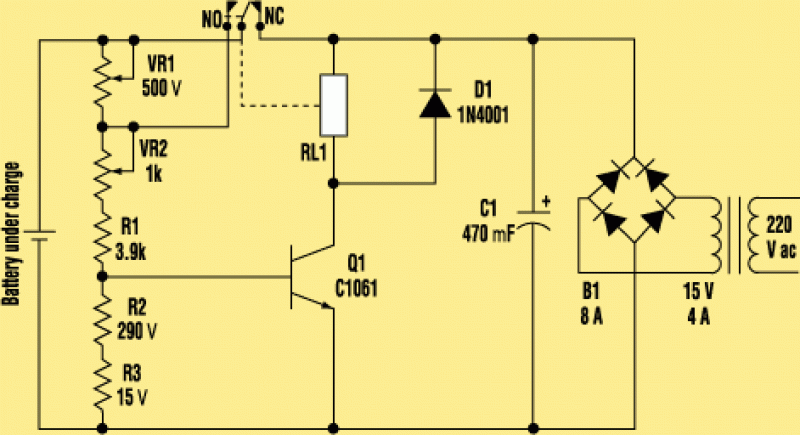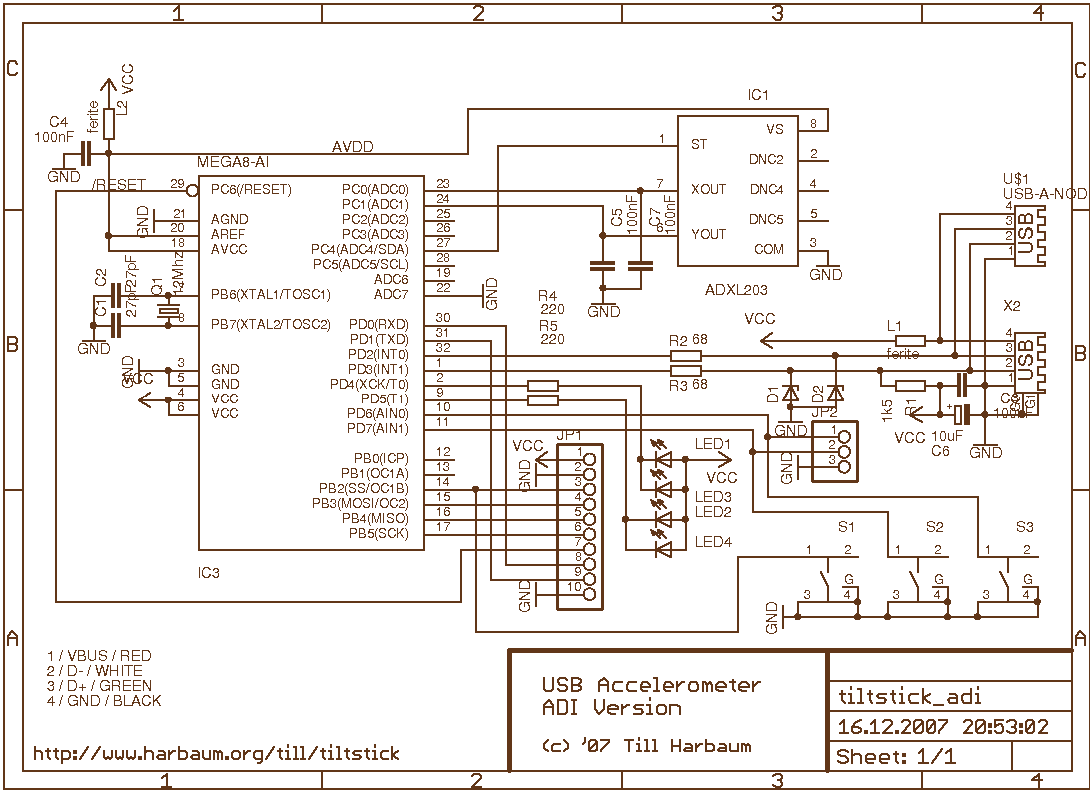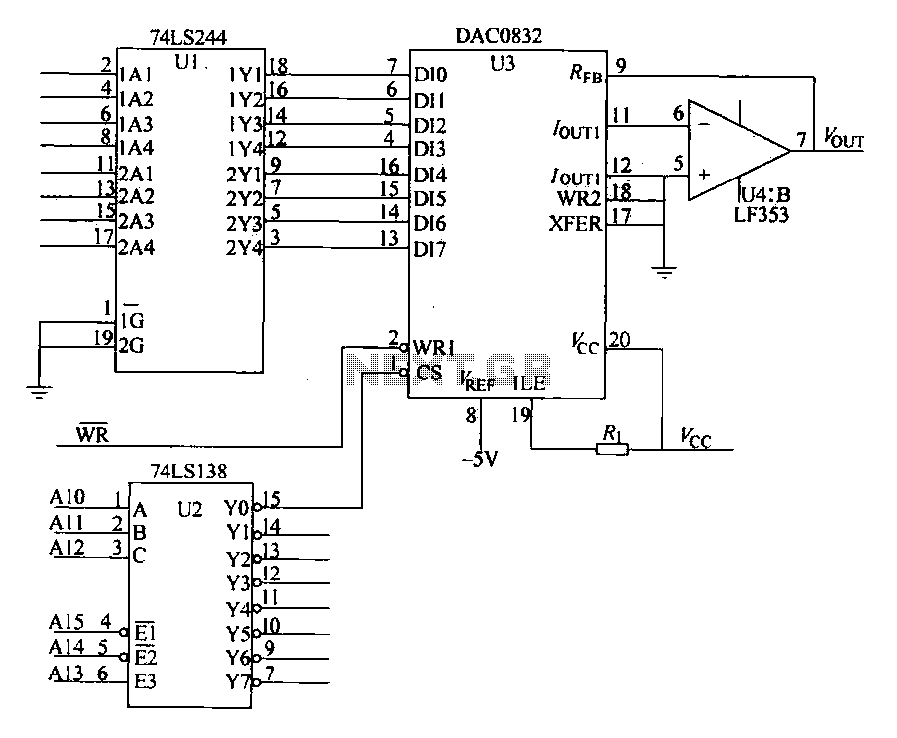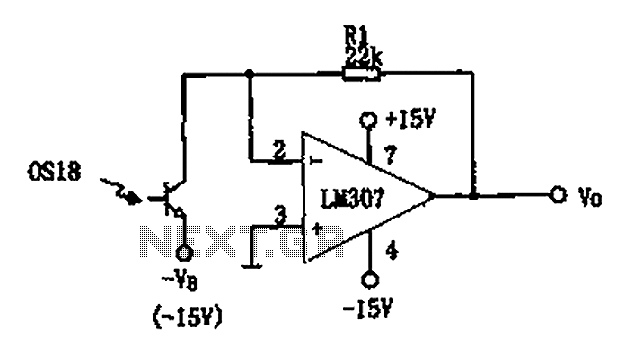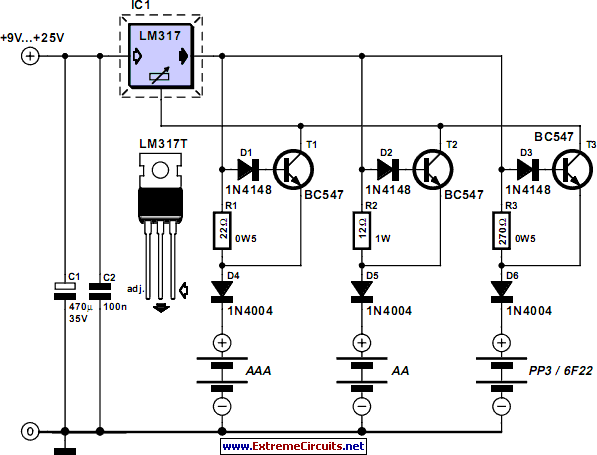
NCP5080 Xenon Photoflash Capacitor Charger With Photo Sense Interface
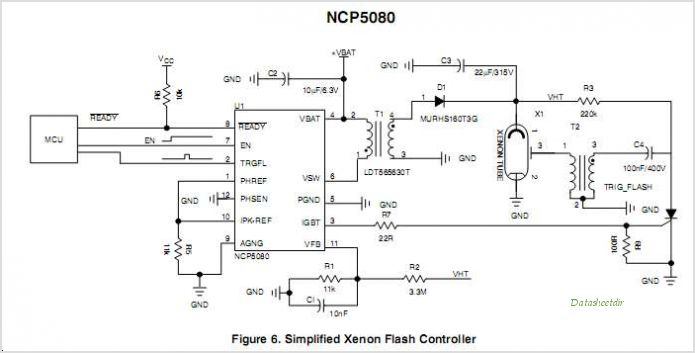
The NCP5810D is a dual-output DC/DC converter capable of generating both positive and negative voltages. This device is optimized for powering modules such as AMOLED display drivers, where high output voltage accuracy, regulation, signal integrity, and compact design are crucial for handset applications. The output voltage of the inverter can be fully configured using external feedback resistors, while the output voltage of the boost converter is internally fixed at +4.6 V. The purpose of the demo boards is to demonstrate the typical operation of the NCP5810D device for laboratory characterization. The schematic for the NCP5810DGEVB is provided.
The NCP5810D is designed to provide a reliable power solution for applications requiring both positive and negative voltage outputs. It features a dual-output architecture, making it suitable for devices that require multiple voltage levels. The configuration of the output voltage for the inverter allows for flexibility in design, as external feedback resistors can be adjusted to achieve the desired voltage levels. This adaptability is particularly beneficial in applications where precise voltage control is needed.
The device's internal boost converter is set to a fixed output of +4.6 V, which is ideal for powering many common electronic components. This fixed output simplifies the design process, as it eliminates the need for additional components to regulate this voltage level. The high efficiency of the NCP5810D ensures minimal power loss during operation, contributing to overall system performance and thermal management.
The demo boards associated with the NCP5810D serve as practical tools for engineers and developers. They provide a platform for testing and evaluating the device's performance under various operating conditions. The schematic of the NCP5810DGEVB illustrates the connections and components involved in the demonstration setup, offering insights into the typical usage and operational characteristics of the converter.
In summary, the NCP5810D is a versatile DC/DC converter that meets the demands of modern electronic applications, particularly in the realm of mobile devices. Its ability to generate both positive and negative voltages, combined with its configurability and efficiency, makes it an essential component for powering sensitive electronic modules like AMOLED display drivers.The NCP5810D is a dual ’output DC/DC converter which CAN generate both a positive and a negative voltage. The device is optimized for powering modules such as AMOLED Display drivers where very good output voltage accuracy and regulation, signal integrity and space is essential for handsets applications.
The output voltage of the inverter is fully configurable using external feedback resistors, where the output voltage of the boost is internally fixed at + 4. 6 V. The intent of the demo boards is to illustrate typical operation of the NCP5810D device for laboratory characterization.
The NCP5810DGEVB schematic is depicted. 🔗 External reference
The NCP5810D is designed to provide a reliable power solution for applications requiring both positive and negative voltage outputs. It features a dual-output architecture, making it suitable for devices that require multiple voltage levels. The configuration of the output voltage for the inverter allows for flexibility in design, as external feedback resistors can be adjusted to achieve the desired voltage levels. This adaptability is particularly beneficial in applications where precise voltage control is needed.
The device's internal boost converter is set to a fixed output of +4.6 V, which is ideal for powering many common electronic components. This fixed output simplifies the design process, as it eliminates the need for additional components to regulate this voltage level. The high efficiency of the NCP5810D ensures minimal power loss during operation, contributing to overall system performance and thermal management.
The demo boards associated with the NCP5810D serve as practical tools for engineers and developers. They provide a platform for testing and evaluating the device's performance under various operating conditions. The schematic of the NCP5810DGEVB illustrates the connections and components involved in the demonstration setup, offering insights into the typical usage and operational characteristics of the converter.
In summary, the NCP5810D is a versatile DC/DC converter that meets the demands of modern electronic applications, particularly in the realm of mobile devices. Its ability to generate both positive and negative voltages, combined with its configurability and efficiency, makes it an essential component for powering sensitive electronic modules like AMOLED display drivers.The NCP5810D is a dual ’output DC/DC converter which CAN generate both a positive and a negative voltage. The device is optimized for powering modules such as AMOLED Display drivers where very good output voltage accuracy and regulation, signal integrity and space is essential for handsets applications.
The output voltage of the inverter is fully configurable using external feedback resistors, where the output voltage of the boost is internally fixed at + 4. 6 V. The intent of the demo boards is to illustrate typical operation of the NCP5810D device for laboratory characterization.
The NCP5810DGEVB schematic is depicted. 🔗 External reference
